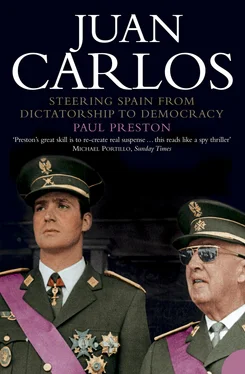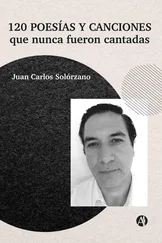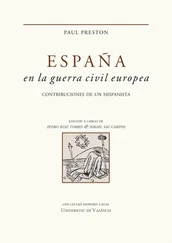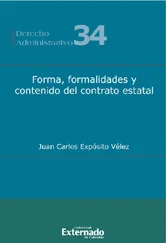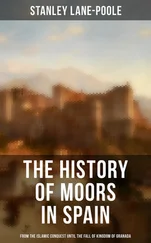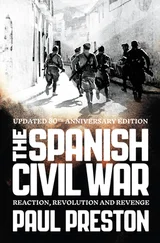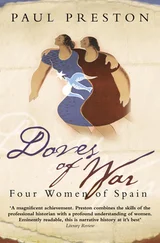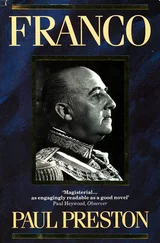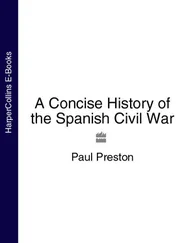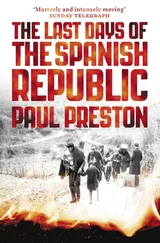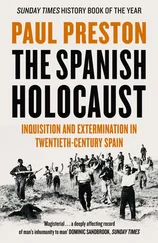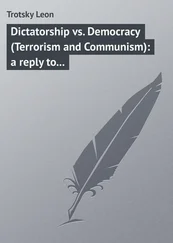Immediately following his eldest son’s renunciation of his dynastic rights, Alfonso XIII arranged for a number of prominent monarchists to put pressure on his second son, Don Jaime, to follow his brother’s example. Don Jaime was deaf and dumb – the result of a botched operation when he was four. Cut off from the world, both by dint of his royal status and his deafness, he had grown into a singularly immature young man. The monarchist leader José Calvo Sotelo persuaded him that his inability to use the telephone would significantly diminish his capacity to take part in anti-Republican conspiracies. 7 Alfonso married Edelmira in Lausanne, in the presence of his mother and two sisters. Neither his father nor three brothers deigned to attend. On the same day, in Fontainebleau, 21 June 1933, Don Jaime, who was single at the time, finally agreed to renounce his rights to the throne, as well as those of his future heirs. The renunciation was irrevocable and would be ratified on 23 July 1945. In spite of this, he would later contest its validity, thereby complicating Juan Carlos’s rise to power. 8
In his 1933 letter to his father, Don Jaime wrote: ‘Sire. The decision of my brother to renounce, for himself and his descendants, his rights to the succession of the crown has led me to weigh the obligations that thus fall on me … I have decided on a formal and explicit renunciation, for me and for any descendants that I might have, of my rights to the throne of our fatherland.’ 9 Don Jaime would, in any case, have lost his rights when, in 1935, he also made a morganatic marriage, to an Italian, Emmanuela Dampierre Ruspoli, who although a minor aristocrat was not of royal blood. It was not a love match and would end unhappily. 10
In the summer of 1933, during a royal skiing holiday in Istria, Alfonso’s fourth son, Don Gonzalo – who also suffered from haemophilia – was involved in a car crash and died as a result of an internal haemorrhage. 11 His first son fared little better. After his allowance was slashed by the exiled King, Alfonso’s marriage to Edelmira did not survive. They divorced in May 1937. Two months later, he married another Cuban, Marta Rocafort y Altuzarra, a beautiful model. The marriage lasted barely six months and they were also divorced, in January 1938. Having fallen in love with Mildred Gaydon, a cigarette girl in a Miami nightclub, Alfonso was on the point of marrying for a third time when tragedy once more struck the Borbón family. On the night of 6 September 1938, after leaving the club where Mildred worked, he too was involved in a car crash and, like his brother Gonzalo, died of internal bleeding. 12
As a result of the successive renunciations of Alfonso and Jaime, the title of Príncipe de Asturias fell upon Alfonso XIII’s third son, the 20-year-old Don Juan. When he received his father’s telegram informing him of this, Don Juan was a serving officer in the Royal Navy on HMS Enterprise , anchored in Bombay. Because he realized that his new role would eventually involve him leaving his beloved naval career, he accepted only after some delay. In May 1934, he was promoted to sub-lieutenant and in September, he joined the battleship HMS Iron Duke . In March 1935, he passed the examinations in naval gunnery and navigation which opened the way to his becoming a lieutenant and being eligible to command a vessel. However, that would mean renouncing his Spanish nationality, something he was not prepared to do. His uncle, King George V, granted him the rank of honorary Lieutenant RN. 13
Don Juan did not emulate his elder brothers’ disastrous marriages. On 13 January 1935, at a party given by the King and Queen of Italy on the eve of the marriage of the Infanta Doña Beatriz to Prince Alessandro Torlonia, Prince di Civitella Cesi, Don Juan had met the 24-year-old María de las Mercedes Borbón Orléans. Having faced the problem of his eldest son’s unsuitable marriage, Alfonso XIII was delighted when Don Juan began to fall in love with a statuesque princess who was descended from the royal families of Spain, France, Italy and Austria. They were married on 12 October 1935 in Rome. Several thousand Spanish monarchists made the trip to the Italian capital and turned the ceremony into a demonstration against the Spanish Republic. By this time, Queen Victoria Eugenia had long since left Alfonso XIII and she refused to attend the wedding. 14 The newly appointed Príncipe de Asturias and his new bride settled at the Villa Saint Blaise in Cannes in the south of France. There, he quickly made contact with the leading monarchist politicians who were involved in anti-Republican plots.
Unsurprisingly, when on the evening of 17 July 1936 units of the Spanish Army in Morocco rebelled against the Second Republic, the coup d’état was enthusiastically welcomed by both Don Juan and his father. They avidly followed the progress of the military rebels on the radio, particularly through the lurid broadcasts of General Queipo de Llano. A group of Don Juan’s followers, who had been avid conspirators against the Republic, including Eugenio Vegas Latapié, Jorge Vigón, the Conde de Ruiseñada and the Marqués de la Eliseda, felt that it would be politically prudent for him to be seen fighting on the Nationalist side. He had already discussed the matter with his aide-de-camp, Captain Juan Luis Roca de Togores, the Vizconde de Rocamora. Don Juan left his home for the front for the first time on 31 July 1936, despite the fact that only the previous day Doña María de las Mercedes had given birth to their first child, a daughter, Pilar. His mother, Queen Victoria Eugenia, was present, having come to Cannes for the birth. To the delight of Don Juan’s followers, she declared: ‘I think it is right that my son should go to war. In extreme situations, such as the present one, women must pray and men must fight.’ Pleasantly surprised by this, they were, nevertheless, worried about the possible reaction of Alfonso XIII who was holidaying in Czechoslovakia. However, when Don Juan telephoned him, he too agreed enthusiastically, saying, ‘I am delighted. Go, my son, and may God be with you!’
The following day, 1 August, the tall and good-natured Don Juan duly crossed the French border into Spain in a chauffeur-driven Bentley, ahead of a small convoy of cars carrying his followers. They arrived in Burgos determined to fight on the Nationalist side. However, the rebel commander in the north, the impulsive General Emilio Mola, was in fact an anti-monarchist. Without consulting his fellow generals, he abruptly ordered the Civil Guard to ensure that Don Juan left Spain immediately. This incident inclined many deeply monarchist officers to transfer their long-term political loyalty from Mola to Franco. 15
After his return to Cannes, the presence of important supporters of the Spanish military rebellion attracted the attention of local leftists. Groups of militants of the Front Populaire took to gathering outside the Villa Saint Blaise each evening and shouting pro-Republican slogans. Fearful for the security of his family – his wife was pregnant once more – Don Juan decided to move to Rome. His father was already resident there and the Fascist authorities would ensure that there would be no unpleasantness of the kind that had marred their stay in France. At first they lived in the Hotel Eden until, at the beginning of 1937, they moved into a flat on the top floor of the Palazzo Torlonia in Via Bocca di Leone. The palazzo was the home of Don Juan’s sister Doña Beatriz and Alessandro Torlonia. 16
At the beginning of January 1938, Doña María de las Mercedes was coming to the culmination of her second pregnancy. However, when Don Juan was invited to go hunting, her doctor assured him that it was safe to go as the baby would not appear for at least another three weeks. Doña María was at the cinema with her father-in-law, Alfonso XIII, when her labour pains began. Juan Carlos was born at 2.30 p.m. on 5 January 1938 at the Anglo-American hospital in Rome. He was one month premature. When Doña María was taken to hospital, her lady-in-waiting, Angelita Martínez Campos, the Vizcondesa de Rocamora, called Don Juan back to Rome by sending him a telegram which read ‘ Bambolo natto ’ (Baby born). On receiving the telegram, he set off, driving so furiously that he broke an axle spring on his Bentley. Arriving before his son, Alfonso XIII played a trick. As he welcomed Don Juan, he held in his arms a Chinese baby boy – who had been born in an adjoining room to the secretary at the Chinese Embassy. Don Juan knew at once that the child was not his, yet, on seeing his own son, he confessed later, for a moment, he would have almost preferred the Chinese baby. Doña María, unlike most mothers, did not think her baby was the most beautiful creature on earth. She later recalled that, ‘The poor thing was a month premature and had big bulging eyes. He was ugly, as ugly as sin! It was awful! Thank God he soon sorted himself out.’ The blond baby weighed three kilograms. The earliest photographs of Juan Carlos were taken, not at his birth, but when he was already five months old. 17 Despite his mother’s initial alarm, Juan Carlos did not remain ‘ugly’ for long. His good looks would always be a major asset – they would, indeed, be a major factor in his eventually winning the approval of Queen Frederica of Greece, his future mother-in-law. 18
Читать дальше
